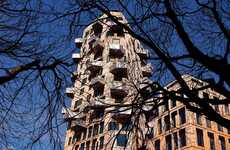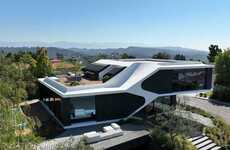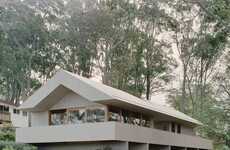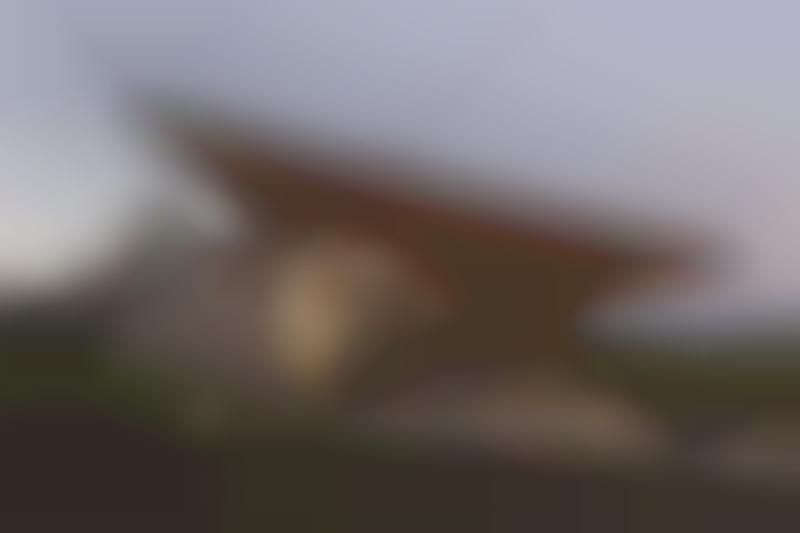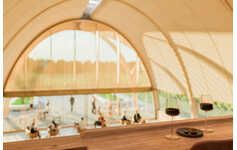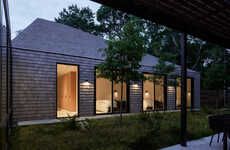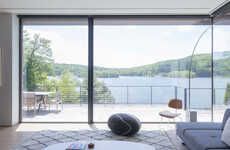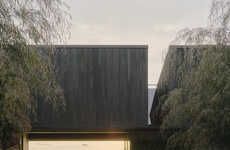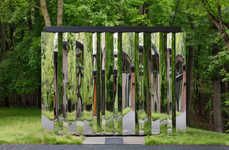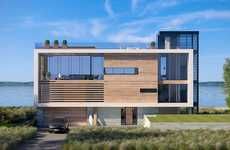
'L'Angolo Estate' Has a Roof Designed to Passively Manage Natural Light
Joey Haar — February 21, 2018 — Art & Design
References: archdaily
'L'Angolo Estate', a publicly accessible vineyard facility in Newberg, Oregon, features a design that passively manages its temperature, creating a more environmentally friendly building as a whole. The key factor behind that design is the building's roof, which features an offset angle that allows for a skylight and air flow out of the interior simultaneously.
The angle of L'Angolo Estate's roof is precise. Cool air tends to blow over the vineyard from the open side of the building, and the roof's angle thus channels some of that air into the interior through the open windows on the windward side. The angle then forces the warm air inside the building upward and outward, where it channels out through the skylight gap in the upper leeward side.
Image Credit: Jeremy Bitterman
The angle of L'Angolo Estate's roof is precise. Cool air tends to blow over the vineyard from the open side of the building, and the roof's angle thus channels some of that air into the interior through the open windows on the windward side. The angle then forces the warm air inside the building upward and outward, where it channels out through the skylight gap in the upper leeward side.
Image Credit: Jeremy Bitterman
Trend Themes
1. Passive Design - There is an opportunity for architects to design more buildings that passively manage temperature and lighting through innovative roof designs.
2. Environmentally Friendly Architecture - The use of offset angled roofs can promote more sustainable architecture by reducing the need for energy-consuming cooling systems.
3. Air Flow Optimization - The focus on designing roofs that channel air flow in specific ways can lead to more energy-efficient buildings in the future.
Industry Implications
1. Architecture - Architecture firms can explore innovative roof designs to create more sustainable and environmentally friendly buildings.
2. Construction - Construction companies can adopt the use of offset angled roofs to provide more energy-efficient and cost-effective buildings for clients.
3. Sustainable Development - The incorporation of offset angled roofs can promote sustainable development in various industries, including vineyards and agricultural facilities.
3.2
Score
Popularity
Activity
Freshness


